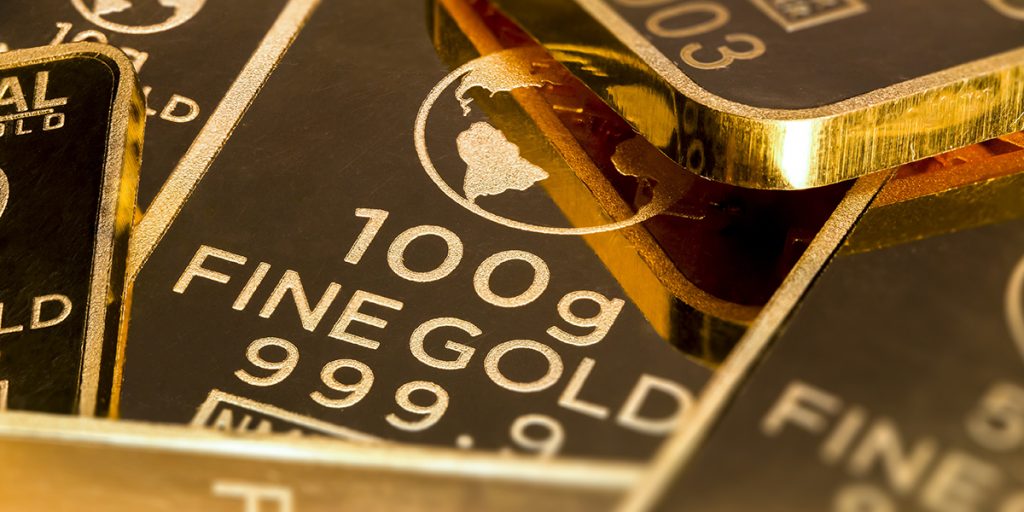Navigate
Article List
- Editorial
By Gordon Cheung, Deputy Chief Executive, SBMA
- The Australian Gold Industry, Trade, and Markets
By Thuong Nguyen, Economist, Australian Government Department of Industry, Innovation and Science
- Platinum & Palladium Outlook
By Bruce Ikemizu, Head of Commodities Trading, ICBC Standard Bank, Tokyo Branch
- Our Journey – SBMA’s Humble Beginnings To Our Silver Jubilee And Beyond
By Albert Cheng, CEO, SBMA
- Global Technology With Local Service
By ECO-Mastermelt
- Percolating Market, Policy Risks Point To Weightier Gold Allocations
By Bart Melek, Global Head of Commodity Strategy, TD Securities
- Economic Jitters Fuel Gold Rush
By Finews Asia
- Safeguarding Singapore’s Precious Metals Industry
By Paramjit Singh, Registrar of Regulated Dealers, Director, Anti-Money Laundering/Countering the Financing of Terrorism (AML/CFT) division, Ministry of Law
- The Added Value
By Jacek Baranowski, International Sales Manager, Metal Market Asia
- SBMA News
By Albert Cheng, CEO, SBMA
Article List
- Editorial
By Gordon Cheung, Deputy Chief Executive, SBMA
- The Australian Gold Industry, Trade, and Markets
By Thuong Nguyen, Economist, Australian Government Department of Industry, Innovation and Science
- Platinum & Palladium Outlook
By Bruce Ikemizu, Head of Commodities Trading, ICBC Standard Bank, Tokyo Branch
- Our Journey – SBMA’s Humble Beginnings To Our Silver Jubilee And Beyond
By Albert Cheng, CEO, SBMA
- Global Technology With Local Service
By ECO-Mastermelt
- Percolating Market, Policy Risks Point To Weightier Gold Allocations
By Bart Melek, Global Head of Commodity Strategy, TD Securities
- Economic Jitters Fuel Gold Rush
By Finews Asia
- Safeguarding Singapore’s Precious Metals Industry
By Paramjit Singh, Registrar of Regulated Dealers, Director, Anti-Money Laundering/Countering the Financing of Terrorism (AML/CFT) division, Ministry of Law
- The Added Value
By Jacek Baranowski, International Sales Manager, Metal Market Asia
- SBMA News
By Albert Cheng, CEO, SBMA
Economic Jitters Fuel Gold Rush
By Finews Asia
Published on June 5, 2019

Central bank gold-buying and growth in gold-backed exchange-traded funds have driven a 7-percent increase in global demand for the precious metal in the first quarter.
Global gold demand in the first quarter of 2019 reached 1,053.3 tonnes, 7 percent more than the same period the year before, while gold-backed ETFs grew by 49 percent to reach 40.3 tonnes, according to data published by the World Gold Council.
“The beginning of 2019 saw a sharp recovery in investor sentiment in both the equity and debt markets, but appetite for gold remained solid. In Q1, central banks continued to increase their holdings of gold, while ETFs also saw an increase in inflows compared with the first quarter of 2018”, Alistair Hewitt, Head of Market Intelligence at the World Gold Council, said.
“European investment in ETFs hit a record high and this quarter’s figures suggest that the factors that are driving the investment – negative yields on Eurozone sovereign debt, geopolitical uncertainty and financial market volatility – will continue to underpin investment demand”.
CENTRAL BANK BUYING
Central banks added 145.5 tonnes to global reserves, the largest first-quarter increase since 2013 and 68 percent higher than the first quarter of 2018. Nine countries added more than 1 ton of gold to their reserves, with Russia remaining the biggest buyer, adding 55.3 tonnes during the quarter.
In Asia, gold buying among central banks remained strong. China added 33 tonnes of gold, marking four consecutive months of gold accumulation, while India’s gold purchases grew for 13 consecutive months, adding 8.4 tonnes in Q1. Additionally, Kazakhstan added 11 tonnes while the Kyrgyz Republic added 1 ton in Q1.
“We believe that central bank gold buying in this region will continue to be robust as more banks tap into gold’s safety, liquidity and return generating features”, Shaokai Fan, Director, Central Banks and Public Policy, World Gold Council, said in an email to finews.asia.
Southeast Asian gold markets have benefited from strong economic performance in the region, stable currencies, and the festivity around Chinese New Year, which has bolstered demand in the first quarter of the year. Going forward, Southeast Asia may pick up some of the slack in demand created by the region’s northern neighbors in 2019.
– Singapore Bullion Market Association CEO, Albert Cheng told finews.asia
SOUTHEAST ASIA DEMAND
Ongoing trade tensions between the U.S. and China has dampened consumer interest in gold jewellery consumption and the tightening liquidity pool has hampered the investment/financing demand in North Asia – retail investment demand in China fell 8 percent to 71.2 tonnes in Q1, while Japan’s retail bar and coin market contracted by 6.2 tonnes.
Retail investment demand in Thailand – the region’s largest gold market – was steady in Q1 at 21.3 tonnes, while Vietnam’s retail bar and coin market grew 5 percent year on year at 13.3 tonnes, as did Indonesia, where it also grew by 5 percent.
This article previously appeared on Finews (www.finews.asia)
























